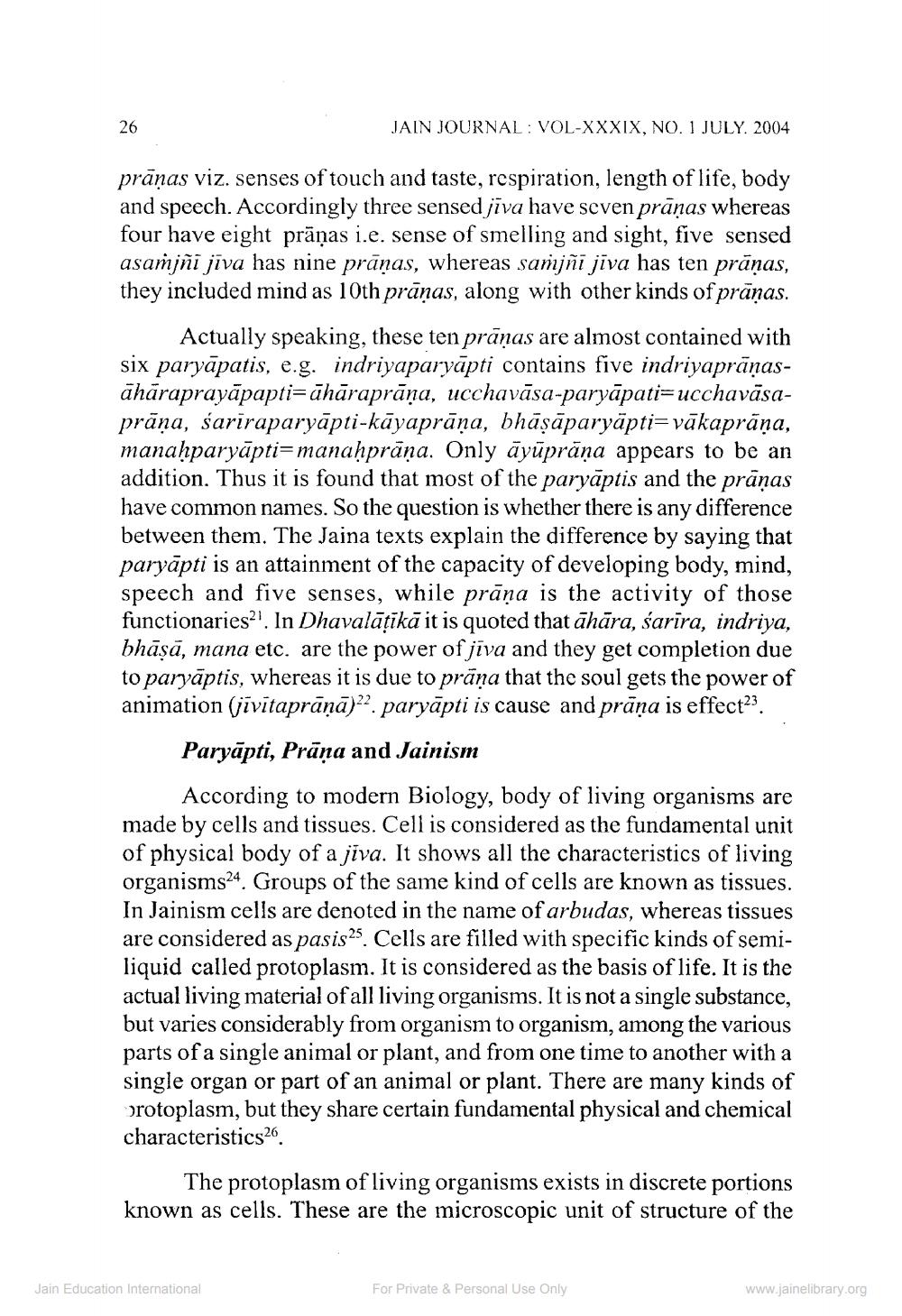________________
JAIN JOURNAL: VOL-XXXIX, NO. 1 JULY 2004
prāņas viz. senses of touch and taste, respiration, length of life, body and speech. Accordingly three sensed jīva have seven prānas whereas four have eight prāņas i.e. sense of smelling and sight, five sensed asamjñi jīva has nine prānas, whereas samjni jīva has ten prānas, they included mind as 10th prānas, along with other kinds of prānas.
Actually speaking, these ten prāņas are almost contained with six paryāpatis, e.g. indriyaparyāpti contains five indriyaprāņasāhāraprayāpapti=āhāraprāņa, ucсhavāsa-paryāpati=ucchavāsaprāņa, sariraparyāpti-kāyaprāņa, bhāṣāparyāpti=vākaprāņa, manahparyāpti=manaḥprāņa. Only āyüprāņa appears to be an addition. Thus it is found that most of the paryāptis and the prānas have common names. So the question is whether there is any difference between them. The Jaina texts explain the difference by saying that paryāpti is an attainment of the capacity of developing body, mind, speech and five senses, while prāna is the activity of those functionaries2?. In Dhavalātikā it is quoted that āhāra, śarīra, indriya, bhāṣā, mana etc. are the power of jīva and they get completion due to paryāptis, whereas it is due to prāņa that the soul gets the power of animation (jīvītaprāņā). paryāpti is cause and prāņa is effect23.
Paryāpti, Prāņa and Jainism
According to modern Biology, body of living organisms are made by cells and tissues. Cell is considered as the fundamental unit of physical body of a jiva. It shows all the characteristics of living organisms24. Groups of the same kind of cells are known as tissues. In Jainism cells are denoted in the name of arbudas, whereas tissues are considered as pasis25. Cells are filled with specific kinds of semiliquid called protoplasm. It is considered as the basis of life. It is the actual living material of all living organisms. It is not a single substance, but varies considerably from organism to organism, among the various parts of a single animal or plant, and from one time to another with a single organ or part of an animal or plant. There are many kinds of Orotoplasm, but they share certain fundamental physical and chemical characteristics26.
The protoplasm of living organisms exists in discrete portions known as cells. These are the microscopic unit of structure of the
Jain Education International
For Private & Personal Use Only
www.jainelibrary.org




